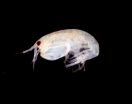(Press-News.org) GAINESVILLE, Fla. — Researchers at the University of Florida and The Johns Hopkins University have developed a line of genetically altered mice that model the earliest stages of Alzheimer's disease. This model may help scientists identify new therapies to provide relief to patients who are beginning to experience symptoms.
The researchers report their findings in the current issue of The Journal of Neuroscience.
"The development of this model could help scientists identify new ways to enhance brain function in patients in the early stages of the disease," said David Borchelt, UF professor of neuroscience in the Evelyn F. and William L. McKnight Brain Institute and director of the SantaFe HealthCare Alzheimer's Disease Research Center. "Such therapies could preserve brain function longer and delay the appearance of more severe symptoms that leave patients unable to care for themselves."
In the early stages of Alzheimer's disease, people struggle with and fail to learn new games, rules or technologies because their cognitive flexibility decreases. The degenerative disease continues with memory loss and the decline of other brain functions.
The researchers worked with mice that had specially designed gene fragments derived from bacteria and from humans that allowed the investigators to control the production of a small peptide. The peptide, called amyloid beta peptide, is a short chain of amino acids. Accumulations of this particular peptide in the brain as lesions called plaques occur early in the progression of Alzheimer's disease and seem to trigger the early memory problems.
The team regulated the expression of the peptide using antibiotics — when the animals stopped taking the antibiotic, the peptide-producing gene turned on and caused the mice to develop the plaques found in Alzheimer's patients. After the mice had developed the Alzheimer pathology, the researchers turned the gene back off and observed that the mice showed persistent memory problems that resemble the early stages of the disease.
"This model may be useful to researchers to test drugs that could help with symptoms of early stage Alzheimer's disease," Borchelt said.
###
This research is funded by the National Institute of Neurological Disease and Stroke of the National Institutes of Health, and the SantaFe HealthCare Alzheimer's Disease Research Center of the University of Florida.
New model could lead to improved treatment for early stage Alzheimer's
2013-03-01
ELSE PRESS RELEASES FROM THIS DATE:
Research unearths new dinosaur species
2013-03-01
RAPID CITY, S.D. (Feb. 28, 2013) – A South Dakota School of Mines & Technology assistant professor and his team have discovered a new species of herbivorous dinosaur and published the first fossil evidence of prehistoric crocodyliforms feeding on small dinosaurs.
Research by Clint Boyd, Ph.D., provides the first definitive evidence that plant-eating baby ornithopod dinosaurs were a food of choice for the crocodyliform, a now extinct relative of the crocodile family. While conducting their research, the team also discovered that this dinosaur prey was a previously unrecognized ...
ACC/HRS release appropriate use criteria for ICDs and CRT
2013-03-01
WASHINGTON (Feb. 28, 2013) –The American College of Cardiology and the Heart Rhythm Society, along with key specialty societies, today released appropriate use criteria for implantable cardioverter-defibrillators (ICDs) and cardiac resynchronization therapy (CRT). The document provides assessed levels of appropriateness for implanting the devices in 369 real-life clinical scenarios, with the goal of enhancing physician and patient decision making and improving care and health outcomes.
Implantable cardioverter-defibrillators are devices that monitor the heart's rhythms ...
Sea lamprey genome mapped with help from scientists at OU
2013-03-01
Beginning in 2004, a group of scientists from around the globe, including two University of Oklahoma faculty members, set out to map the genome of the sea lamprey. The secrets of how this jawless vertebrate separated from the jawed vertebrates early in the evolutionary process will give insight to the ancestry of vertebrate characters and may help investigators more fully understand neurodegenerative diseases in humans.
David McCauley, associate professor in the Biology Department in the OU College of Arts and Sciences, and Sandra W. Clifton, with the OU Center for Advanced ...
Pour, shake and stir
2013-03-01
TORONTO, Ontario (Feb. 28, 2013) - A diagnostic "cocktail" containing a single drop of blood, a dribble of water, and a dose of DNA powder with gold particles could mean rapid diagnosis and treatment of the world's leading diseases in the near future. The cocktail diagnostic is a homegrown brew being developed by University of Toronto's Institute of Biomaterials and Biomedical Engineering (IBBME) PhD student Kyryl Zagorovsky and Professor Warren Chan that could change the way infectious diseases, from HPV and HIV to malaria, are diagnosed.
And it involves the same technology ...
NOAA and NASA's next generation weather satellite may provide earlier warnings
2013-03-01
A new satellite that will detect the lightning inside storm clouds may lead to valuable improvements in tornado detection. The GOES-R satellite is currently being built with new technology that may help provide earlier warnings for severe weather. The national average is a 14-minute lead time to warn residents of a tornado, but NASA and NOAA scientists are looking to improve severe weather detection to save lives and property. They are developing the Geostationary Operational Environmental Satellite-R Series, or GOES-R, to observe thunderstorm development with much greater ...
NASA's Van Allen Probes discover a surprise circling Earth
2013-03-01
After most NASA science spacecraft launches, researchers wait patiently for months as instruments on board are turned on one at a time, slowly ramped up to full power, and tested to make sure they work at full capacity. It's a rite of passage for any new satellite in space, and such a schedule was in place for the Van Allen Probes when they launched on Aug. 30, 2012, to study two giant belts of radiation that surround Earth.
But a group of scientists on the mission made a case for changing the plan. They asked that the Relativistic Electron Proton Telescope (REPT) be ...
Zeroing in on heart disease
2013-03-01
Studies screening the genome of hundreds of thousands of individuals (known as Genome-wide association studies or GWAS) have linked more than 100 regions in the genome to the risk of developing cardiovascular disease. Researchers from the European Molecular Biology Laboratory (EMBL) and the University of Heidelberg, through the joint Molecular Medicine Partnership Unit (MMPU), are taking these results one step further by pinpointing the exact genes that could have a role in the onset of the disease. Their findings are published today in the Public Library of Science (PLoS) ...
New marine species discovered in Pacific Ocean
2013-03-01
HOLLYWOOD Fla. — When Jim Thomas and his global team of researchers returned to the Madang Lagoon in Papua New Guinea, they discovered a treasure trove of new species unknown to science.
This is especially relevant as the research team consisted of scientists who had conducted a previous survey in the 1990s.
"In the Madang Lagoon, we went a half mile out off the leading edge of the active Australian Plate and were in 6,000 meters of water," said Thomas, Ph.D., a researcher at Nova Southeastern University's National Coral Reef Institute in Hollywood, Fla.
"It was ...
BPA raises risk for childhood asthma
2013-03-01
Researchers at the Columbia Center for Children's Environmental Health at the Mailman School of Public Health are the first to report an association between early childhood exposure to the chemical bisphenol A (BPA) and an elevated risk for asthma in young children. BPA is a component of some plastics and is found in food can liners and store receipts.
Results appear in the March edition of the Journal of Allergy and Clinical Immunology.
"Asthma prevalence has increased dramatically over the past 30 years, which suggests that some as-yet-undiscovered environmental exposures ...
Pharmaceutical companies: An $84 million marketing effort in the District of Columbia
2013-03-01
Washington, D.C.—Drug companies spent nearly $84 million marketing pharmaceuticals in the District of Columbia in 2011, including an outlay of nearly $19 million for gifts given to physicians, hospitals and other health care providers, according to a report by researchers at the George Washington University School of Public Health and Health Services (SPHHS). The report notes that 12 physicians in the District received gifts (including consulting payments) that totaled more than $100,000 apiece that one year alone.
"There is nothing inherently wrong with such gifts," ...



